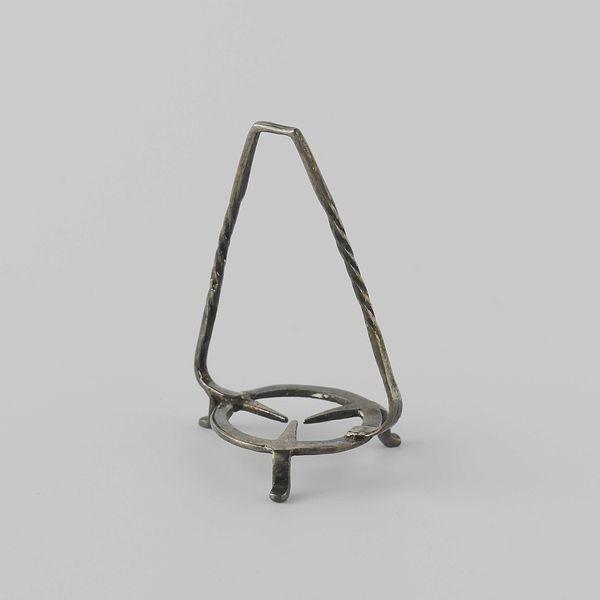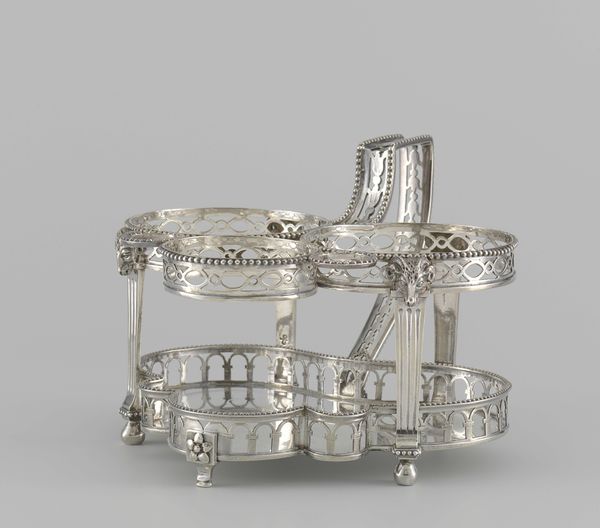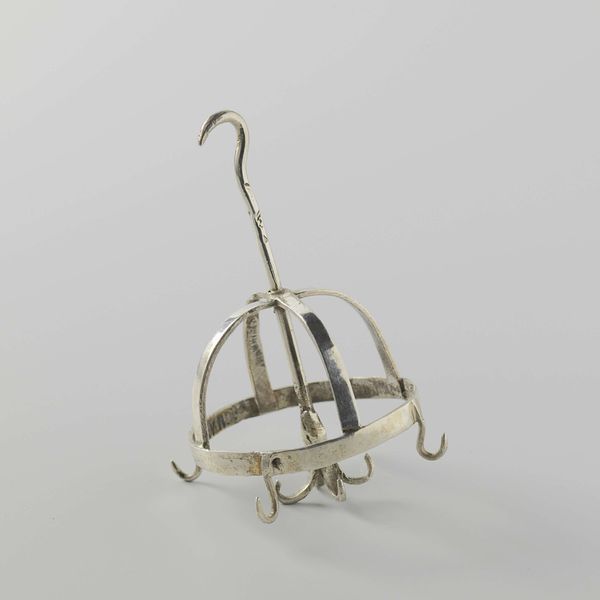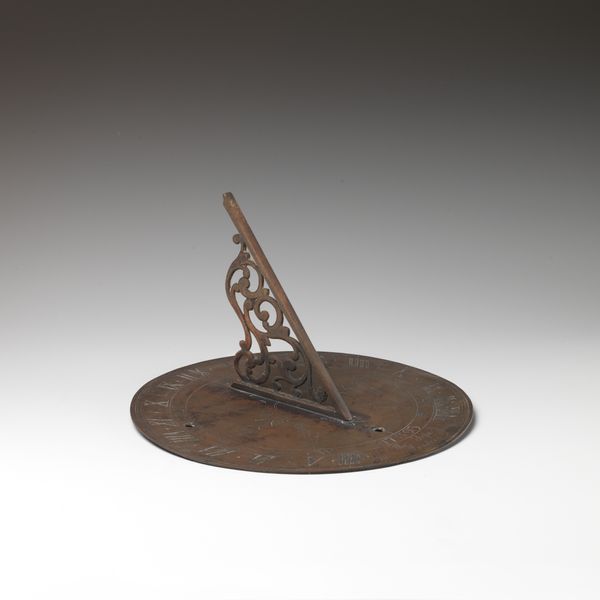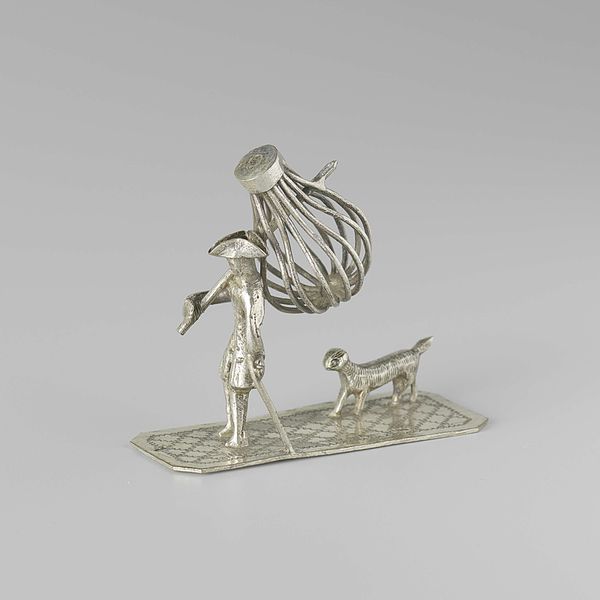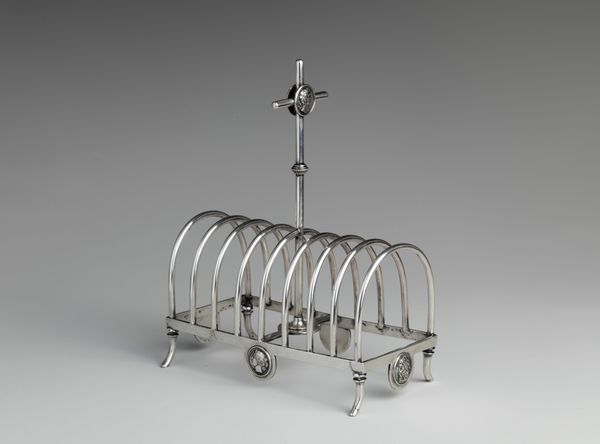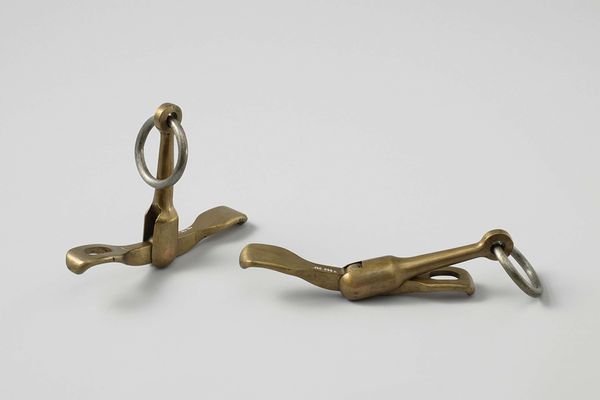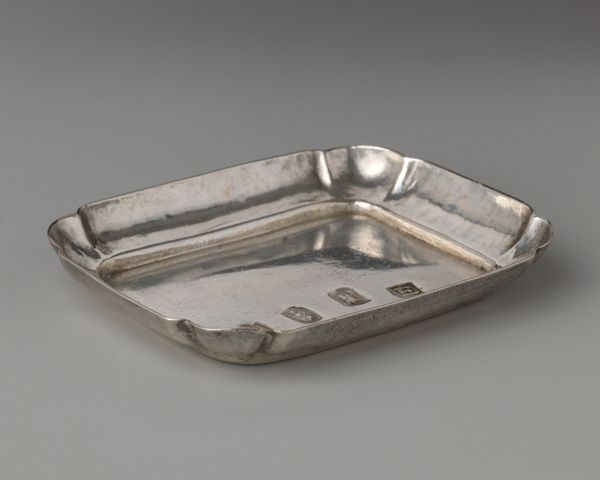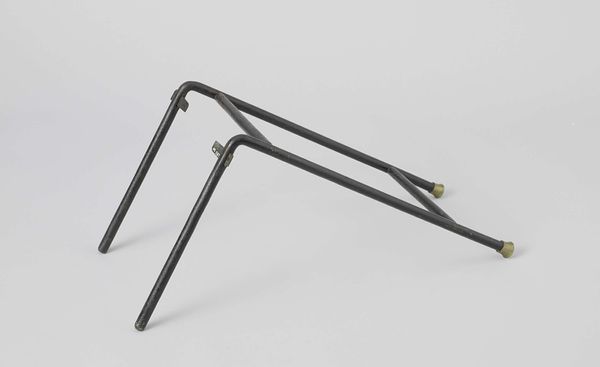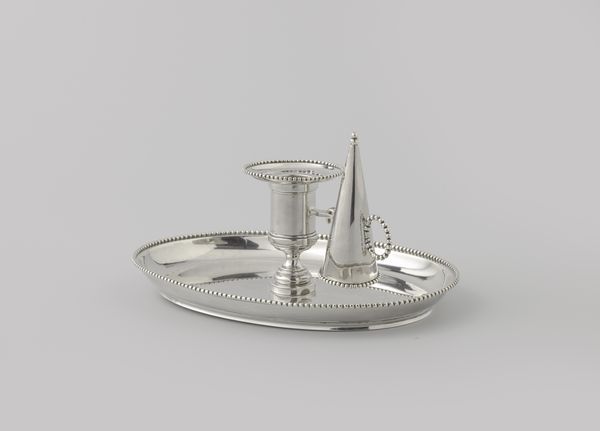
Olie- en azijnstel van tin met twee flessenhouders c. 1770 - 1795
0:00
0:00
Dimensions: height 21.0 cm, length 20.5 cm, width 8.3 cm
Copyright: Rijks Museum: Open Domain
Curator: Welcome. We’re standing before an intriguing piece titled "Olie- en azijnstel van tin met twee flessenhouders," an oil and vinegar set crafted from tin, with two bottle holders. The piece dates back to somewhere between 1770 and 1795, and the profile associated with this artwork is Carolus Theodorus de Ruijr. Editor: My first impression is of understated elegance. The tin gives it a cool, muted tone, and the repeating circular and curved forms create a rhythmic, almost musical quality. There’s a subtle interplay of light and shadow that enhances its tactile nature. Curator: Precisely. Now, considering its period, this set speaks volumes about the socio-economic status of its owners. Owning such a refined piece suggests access to trade routes and resources. The availability of specialized tableware signified a degree of refinement and engagement with evolving culinary practices. Editor: Absolutely, the craftsmanship here is evident. Note the Baroque-inspired flourishes—those stylized, elongated curves, especially on the handle. The artist has managed to extract grace from such a seemingly humble material, which also calls the period’s broader focus on ornamentation to attention. Curator: And tin, although not as precious as silver or gold, would still have represented an investment, something accessible to a growing merchant class. Furthermore, consider the bottles themselves. Their presence signifies the era's engagement with preserving and flavouring food, suggesting a move towards complex flavour profiles. What were the narratives embedded in the routines of shared meals? Editor: That's very interesting! Zooming in, the geometric piercing on the surface of the central tray—this negative space balances the heaviness of the material, echoing the shapes found above and hinting towards balance within the object itself. The almost floral decorative pattern adds visual complexity to what might otherwise appear overly functional. Curator: Yes, so this small object serves as a lens through which we can observe shifts in food culture and class dynamics during the late 18th century. It highlights how objects mediate our relationships, and our relationships to societal shifts. Editor: It speaks volumes through such contained visual grammar. A reminder that elegance often resides in simplicity, even in something made from common tin. Curator: Agreed. A piece ripe for interpretation beyond its mere function.
Comments
No comments
Be the first to comment and join the conversation on the ultimate creative platform.
